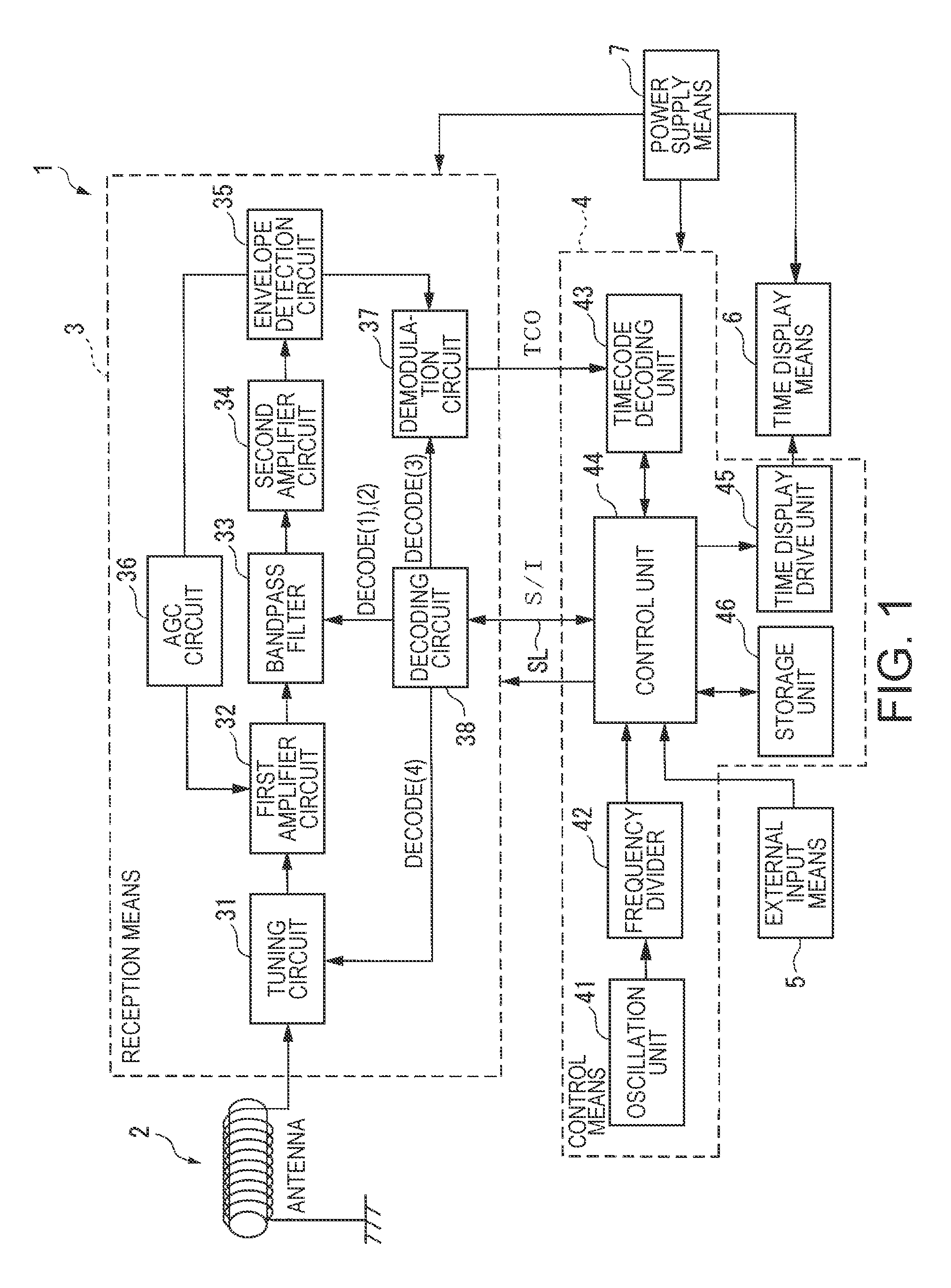Reception circuit, radio-controlled timepiece, and reception circuit control method
a technology of reception circuit and radio control, which is applied in the direction of instruments, horology, electric windings, etc., can solve the problems of noise in the output of filtered reception signal from the crystal filter, insufficient cancellation of high frequency noise, and noise in the extraction of signal
- Summary
- Abstract
- Description
- Claims
- Application Information
AI Technical Summary
Benefits of technology
Problems solved by technology
Method used
Image
Examples
Embodiment Construction
[0057]Preferred embodiments of the present invention are described below with reference to the accompanying figures.
[0058](1) Timepiece Arrangement
[0059]FIG. 1 is a block diagram showing the arrangement of a timepiece 1 according to a preferred embodiment of the invention.
[0060]The timepiece 1 according to this embodiment of the invention is a radio-controlled timepiece that receives a long-wave standard time signal (also referred to below as simply a standard time signal), demodulates the TCO (timecode output) signal of the standard time signal, and adjusts the internally kept time based on this TCO signal. As shown in FIG. 1 this timepiece 1 has an antenna 2, a reception means 3, a control means 4, an external input means 5, a time display means 6, and a power supply means 7.
[0061]The external input means 5 is used by the user to operate the timepiece 1, and could be the crown or a button, for example.
[0062]The time display means 6 displays the time, and could be an analog display...
PUM
 Login to View More
Login to View More Abstract
Description
Claims
Application Information
 Login to View More
Login to View More - R&D
- Intellectual Property
- Life Sciences
- Materials
- Tech Scout
- Unparalleled Data Quality
- Higher Quality Content
- 60% Fewer Hallucinations
Browse by: Latest US Patents, China's latest patents, Technical Efficacy Thesaurus, Application Domain, Technology Topic, Popular Technical Reports.
© 2025 PatSnap. All rights reserved.Legal|Privacy policy|Modern Slavery Act Transparency Statement|Sitemap|About US| Contact US: help@patsnap.com



